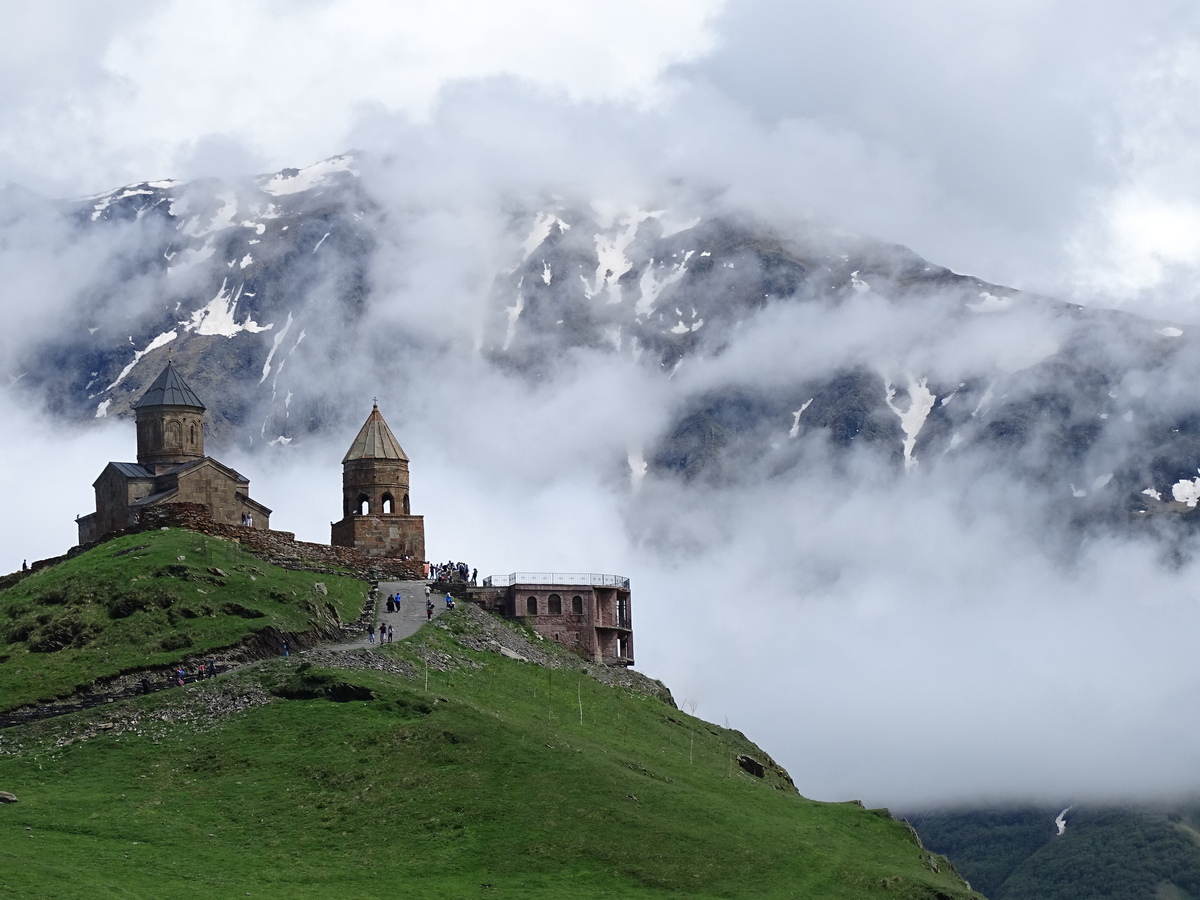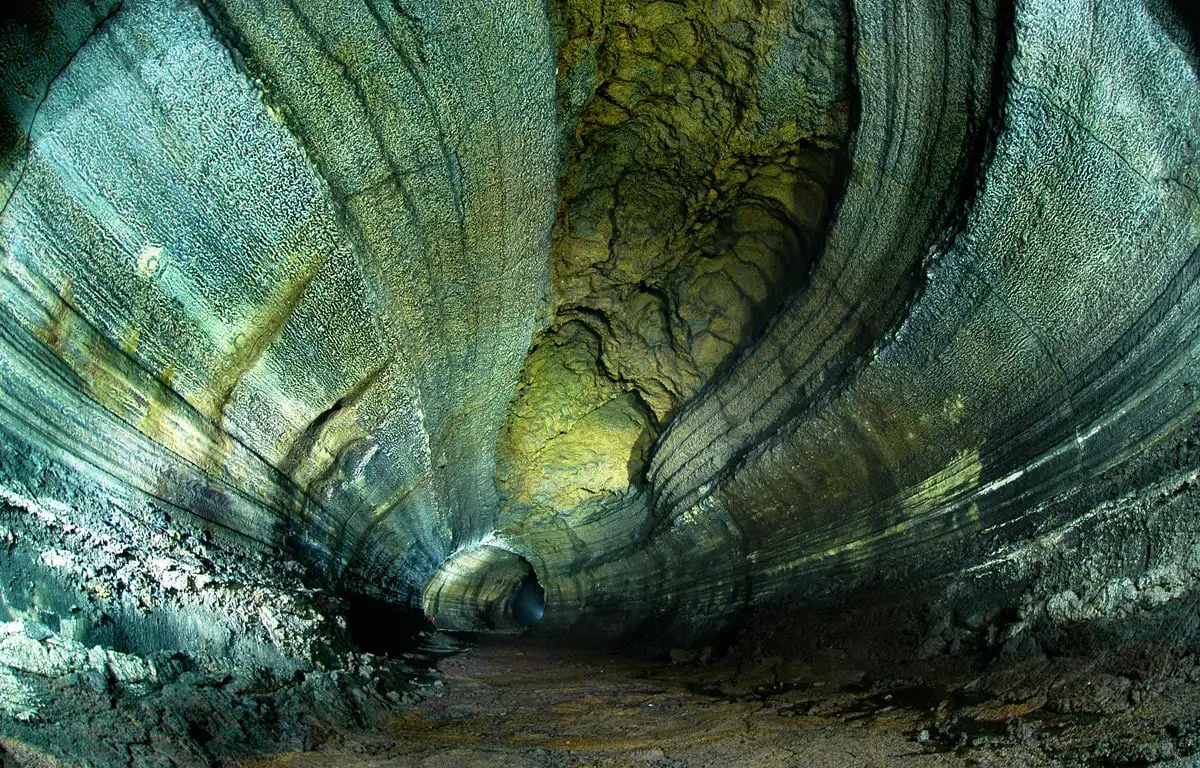 In short
In short
The fifth deepest cave in the world (in 2022) is the amazing Snezhnaya Cave System. This is a true giant in the world of caves with many amazing and unique characteristics.
 45.8%
45.8%
GPS coordinates
Location, address
Name in regional languages
Length
Depth
Map of the site
If you see this after your page is loaded completely, leafletJS files are missing.
 In detail
In detail
History
The entrance in Snezhnaya Cave was discovered in August 1971 by the members of Moscow State University cave explorers T. Guzhva and V. Glebov. The complexity of the cave research was well illustrated by the entrance in the cave – Snezhnaya Cave starts with a 50 m deep pit. On the bottom of this pit for the whole year is an enormous heap of snow. Hence the cave got its name: Snezhnaya is “snowy”.
In 1972 the explorers reached a depth of 700 m and this was one of the deepest known caves already then.
Yearly expeditions continued in the cave. Speleologists gradually overcame the various complexities and step by step more and more passages and diverse wonders opened to human eyes.
In 1983 Snezhnaya was connected to Mezhennogo shaft (discovered in August 1979) and the known depth of the cave reached 1,370 m.
In August 2007 happened the next major step in the exploration – the cave was connected to Illyuziya Cave (discovered in 1980) and the known depth of the cave reached 1,760 m. Technically this depth was reached later, in January 2011, when explorers dived into the deepest place in the cave – Morozov Lake.
In August 2015 the cave was connected to Na Banke Cave.
The exploration of the Snezhnaya Cave System will continue and, most likely, the cave system will become larger.
Description of Snezhnaya Cave System
This giant cave is a very complex cave system that unites multiple diverse parts. Due to this sometimes is used a complex name for this cave system, for example, Illyuzia-Mezhonnogo-Snezhnaya.
The cave has formed in upper Jurassic – lower Cretaceous carbonate rocks (limestone and dolomite). The thickness of this layer is the extreme 1,1 – 1,3 km, but the layer is inclined by 20-40 degrees, thus increasing the theoretically possible depth of the cave in it.
Entrances
The known entrances are Snezhnaya at the height of 1,970 m, Illyuziya (2,389 m), Mezhennogo (2,015 m), and Na Banke (approximately 1,515 m). The most frequently used is Snezhnaya on the southern slope of Razdelnyi ridge.
Giant pile of snow
A characteristic feature is the enormous heap of snow below the entrance shaft of Snezhnaya. The height of this giant pile of snow fluctuates from 25 m to more than 60 m. Try to imagine a pile of snow that is as high as an 18-floor building!
Cave rooms and pits
The largest cave room is Tronnyi Zal (discovered in 2008), which is 309 m long, 109 m wide, and up to 40 m high, and has an approximate volume of 500,000 m3.
The deepest pit in the cave is 7 Seconds Pit – 270 m deep.
Rivers and waterfalls
The cave contains the underground Guzhva River with many tributaries, as well as other rivers that lead to diverse places outside the cave.
Inside the cave are three major waterfalls: Irkutskij with two steps – 45 m high, Olympijskij – 32 m high, and Recordnyj – 25 m high.
The cave river leaves the cave through Estavella Spring (43.2368 N 40.6611 E) at the height of 335 m asl, although the dye coloring experiments have shown that the water leaves the cave through other places as well, including the distant Mchishta Spring that is located far on the other side of Khipsta River.
Unique cave formations
In the cave are known fine aragonite speleothems – coralloids and crystallictites – up to 15-20 cm large dendrites.
In the cave are found also very interesting, globally rare formations from hydromagnesite.
References
- B.R. Mavlyudov, The Snezhnaya-Mezhennogo-Illyuziya cave system in the western Caucasus, Boletín Geológico y Minero, 127 (1): 219-235. Accessed on 28 December 2022.
 Linked articles
Linked articles

Wonders of Georgia
There are few small countries in the world with such a distinct culture and richness of natural and man-made landmarks as Georgia. Here evolved several distinct writing systems, own architectural styles, and art styles.

Caves
Every year there are reported exciting discoveries of new caves and discoveries of new qualities such as cave paintings in the ones known before. But there still is a feeling that our knowledge covers just a small part of all these monuments of nature.
Though, those which are known to us, offer a surprising diversity of unusual features and impressive sights.

Wonders of Asia
Any other continent (and part of the world) seems small if compared to Asia. This refers also to natural and man-made heritage: in Asia are not just thousands of great landmarks, there are found landmarks created by thousands of diverse cultures from ancient Phoenicians to the mysterious small people in the Philippines and eastern islands of Indonesia.
 Recommended books
Recommended books
100 of the Deepest Caves In the World
Are you looking for a journey that will take you through 100 of the Deepest Caves In the World, along with funny comments and a word puzzle? Then this book is for you. Whether you are looking at this book for curiosity, choices, options, or just for fun; this book fits any criteria. Creating 100 of the Deepest Caves In the World did not happen quickly.
Geomorphology of Georgia
This book is based on the results of several years of geomorphological studies and research in Georgia, published for the first time in English, and covers a gap in research in the field of world regional geomorphology.


